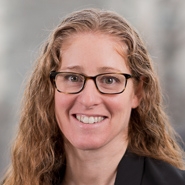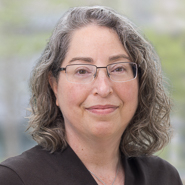MassDEP Proposes Stringent MCL and Finalizes Cleanup Standards for Six PFAS
On December 13, 2019, the Massachusetts Department of Environmental Protection (MassDEP) announced two significant actions addressing per- and polyfluoroalkyl substances (PFAS) in Massachusetts. First, MassDEP is proposing regulations that will set the maximum contaminant level (MCL) for drinking water at 20 parts per trillion (ppt) for six PFAS, combined. MassDEP’s proposed MCL is among the lowest proposed or adopted by any state. Second, MassDEP is promulgating final regulations that set the groundwater cleanup standard at the same level: 20 ppt for six PFAS, combined. This concentration is significantly lower than the federal health advisory level of 70 ppt for only two PFAS, combined. Both of these regulatory actions became available on MassDEP’s web site on December 13, 2019, and will be formally published in the Massachusetts Register on December 27, 2019.
Massachusetts is regulating six PFAS, listed below.
- Perfluorooctanesulfonic acid (PFOS)
- Perfluorooctanoic acid (PFOA)
- Perfluorodecanoic acid (PFDA)
- Perfluoroheptanoic acid (PFHpA)
- Perfluorohexane sulfonic acid (PFHxS)
- Perfluorononanoic acid (PFNA)
These six compounds were selected by MassDEP’s Office of Research and Standards. A technical document supporting this selection is expected but has not yet been made available on MassDEP’s website.
The Proposed Drinking Water MCL
MassDEP’s proposed MCL of 20 ppt for the six PFAS (combined) identified above would apply to all Community Water Systems (e.g., cities and towns) and Non-Transient Non-Community Systems (e.g., schools and larger businesses). These systems would be required to conduct monitoring for PFAS on a quarterly basis for one year, followed by less frequent monitoring, if warranted. Other provisions include required actions when PFAS is detected, monitoring protocols, and language on PFAS health effects for Consumer Confidence Reports.
Transient Non-Community systems would be required to take one sample and analyze it for PFAS. The results must be reported to MassDEP.
Implementation of the rule will be staggered as follows:
| System size or type | Initiate monitoring by | Impact |
|---|---|---|
| 50,000 consumers or more |
April 1, 2020 | 20 systems serving 4.3 million people |
| More than 10,000 consumers |
October 1, 2020 | 106 systems serving 2.6 million people |
| 10,000 consumers or less |
October 1, 2021 | 569 systems serving 708,000 people |
| All transient non-community |
September 30, 2022 | Not indicated |
Final Changes to State Cleanup Regulations
Effective December 27, 2019, MassDEP is amending the state cleanup program, known as the Massachusetts Contingency Plan (MCP), to include final standards for six PFAS. MassDEP issued these regulatory changes after receiving 51 comments during the public comment period. The major change made in response to these comments was to increase (make less strict) the soil standards based on studies conducted in Vermont that suggest that background levels of PFAS are higher than MassDEP initially considered. A more detailed response-to-comments document is expected but has not yet been made available by MassDEP.
Reportable Quantities and Reportable Concentrations
The MCP revisions set reportable quantities and reportable concentrations for six PFAS for groundwater and soil, which trigger an obligation to report the release to the state. The standards are:
| Reportable quantity (lb) |
GW-1 (mg/L) Potential drinking water area |
GW-2 (mg/L) All other groundwater |
S1 (mg/kg) Accessible soil |
S2 (mg/kg) Other soils |
|
|---|---|---|---|---|---|
| Combined total | See individual compounds below |
0.00002 | See individual compounds below |
See individual compounds below |
See individual compounds below |
| PFOA | 1 | See above | 40 | 0.00072 | 0.4 |
| PFOS | 1 | See above | 0.5 | 0.002 | 0.4 |
| PFDA | 1 | See above | 40 | 0.0003 | 0.4 |
| PFHxS | 1 | See above | 0.5 | 0.0003 | 0.4 |
| PFNA | 1 | See above | 40 | 0.00032 | 0.4 |
| PFHpA | 1 | See above | 40 | 0.0005 | 0.4 |
Groundwater Cleanup Standards
The MCP revisions set “Method 1” cleanup standards for the six PFAS for groundwater. Method 1 standards can be used at any site by comparing exposure point concentrations to the standard. The final rule sets the following standards:
| GW-1 (ppb) Applies to potential drinking water areas |
GW-2 (ppb) Applies to areas near structures |
GW-3 (ppb) |
|
|---|---|---|---|
| Combined total | 0.02 | See individual |
See individual compounds below |
| PFOA | See above | N/A | 40,000 |
| PFOS | See above | N/A | 500 |
| PFDA | See above | N/A | 40,000 |
| PFHxS | See above | N/A | 500 |
| PFNA | See above | N/A | 40,000 |
| PFHpA | See above | N/A | 40,000 |
Soil Cleanup Standards
The MCP revisions also set Method 1 cleanup standards for the six PFAS for soil. The standards differentiate between soil that is more accessible to people (e.g., S-1) and soil that is less accessible (e.g., S-3), and take into account potential impacts to groundwater. The newly established standards for the most accessible soils, S-1 are:
| S-1 Soil (ppm) in areas that are: | |||
|---|---|---|---|
| GW-1 | GW-2 | GW-3 | |
| PFOA | 0.00072 | 0.3 | 0.3 |
| PFOS | 0.002 | 0.3 | 0.3 |
| PFDA | 0.0003 | 0.3 | 0.3 |
| PFHxS | 0.0003 | 0.3 | 0.3 |
| PFNA | 0.00032 | 0.3 | 0.3 |
| PFHpA | 0.0005 | 0.3 | 0.3 |
According to MassDEP, a technical support document for the final rule will be made available on or before December 27, 2019.
The Final Word
The drinking water MCL and the groundwater cleanup standard for groundwater that may be used as drinking water are necessarily linked. MassDEP has informally stated that it expects the MCL and the GW-1 cleanup standard to be the same. As a result, if the process of developing an MCL results in a different standard than the 20 ppt level that has been proposed, the cleanup standard will likely be reopened and changed to meet that new level.
The comment period for the drinking water MCL opens on December 27, 2019, and closes at 5:00 pm on Friday, February 28, 2020. MassDEP will be holding five public hearings at different locations across the state in January 2020 to seek additional comment.
Beveridge & Diamond’s Superfund, Site Remediation, and Natural Resources Damages practice group assists clients in litigation and allocation of CERCLA sites, including complex, large-scale sites. We counsel clients on developing case law and requirements under CERCLA and state-equivalent hazardous waste laws. For more information, please contact the authors.









